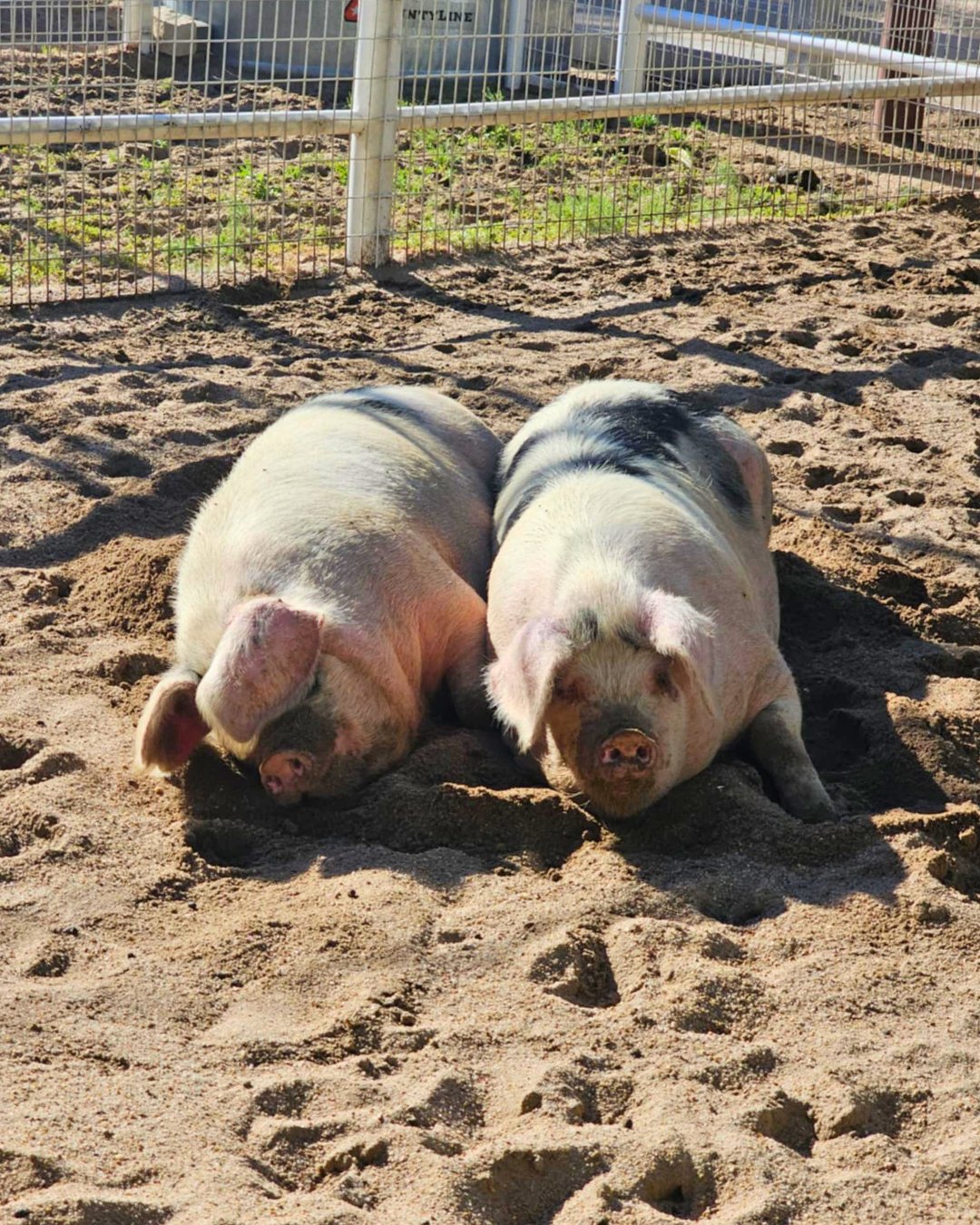-
Explore the characteristics and history of Gloucestershire Old Spot pigs, a heritage breed known for its distinctive appearance and docile nature.
-
Understand the role of these pigs in agricultural sustainability and their contributions to biodiversity conservation.
-
Discover how zoos and children’s farms manage these pigs to foster educational engagement and promote awareness about animal husbandry.
-
Learn about the habitat requirements and daily routines of Gloucestershire Old Spot pigs, with specific insights into Rowan and Cassian.
- Investigate the benefits of integrating heritage breeds into conservation programs and community-oriented farming practices.
Gloucestershire Old Spot pigs, characterized by their white bodies with black spots, hold a rich history that reflects their importance in agricultural heritage. Known for their gentle disposition and robust nature, these pigs have long been valued in farming communities, particularly in the United Kingdom. The breed dates back over 200 years and was historically reared in orchards, where they contributed to pest control and manure production. This heritage makes them vital to discussions on agricultural diversity and sustainability, primarily since the breed was once near extinction.
Rowan and Cassian, the two new residents at our Children’s Farms, embody the breed’s celebrated traits. At one year old, they bring youthful energy to their habitat. Visitors can usually see them basking in the sun or padding around in the sand, behaviors typical of pigs that enjoy both social interaction and environmental enrichment.
These pigs have garnered enthusiasm from both educators and visitors due to their role in environmental sustainability. Gloucestershire Old Spot pigs aid biodiversity by supporting a mixed farming ecosystem. Their rooting behavior aerates the soil, promotes plant growth, and naturally tills the earth, reducing the need for mechanical intervention. This trait reiterates the breed’s significance in promoting eco-friendly farming practices—an important teaching point for visitors who witness these animals at the farm.
Preserving heritage breeds like the Gloucestershire Old Spot is crucial for genetic biodiversity. These pigs serve as a genetic reservoir, offering resilience to diseases and adaptability to environmental changes that modern breeds may lack. Integrating these pigs into children’s farms and zoos provides a living classroom to illustrate concepts of genetics, conservation, and sustainable agriculture.
Managing pigs like Rowan and Cassian in zoos requires thorough knowledge of animal care and welfare. These animals need ample space, a varied diet, and social interaction to thrive. They require a habitat that mimics their natural environment, encouraging foraging and exploration. Zoos that manage such programs often focus on educational opportunities, providing visitors with insights into animal behavior, farming history, and current conservation efforts.
Rowan and Cassian’s daily routine includes both structured and leisurely activities that promote physical health and cognitive engagement. Their diet typically consists of grains, vegetables, and fruits, reflecting what they might consume in a traditional farming setting. These feeding practices are shared with visitors, discussing how modern agriculture can incorporate traditional methods within contemporary settings.
The presence of Gloucestershire Old Spot pigs in children’s farms also highlights the importance of community-oriented farming practices. These pigs are a reminder of the interconnectedness of agriculture, education, and conservation. Their story encourages dialogue about the benefits of maintaining agricultural heritage while addressing the challenges of modern farming practices.
Rowan and Cassian serve not only as attractions but as ambassadors for biodiversity and conservation education. Their narrative aligns with broader themes of preserving threatened breeds and fostering community engagement in sustainable practices. Through daily interaction, visitors learn not just about the pigs themselves but the broader implications of their conservation.
Such educational efforts play a crucial role in shifting perspectives toward more sustainable behaviors, not limited to farming communities but extending to urban settings. By presenting heritage breeds within an educational framework, zoos and farms contribute to a deeper understanding of environmental stewardship and responsibility.
Incorporating Gloucestershire Old Spot pigs into conservation programs in children’s farms exemplifies an innovative approach to environmental education. This approach connects individuals with nature, broadens their understanding of biodiversity, and highlights the essential role of heritage breeds in sustainable development. Rowan and Cassian’s presence is a testament to the ongoing commitment to fostering awareness, appreciation, and action in the field of wildlife conservation and agricultural preservation.
*****
Source Description
We have welcomed two new Gloucestershire old spot pigs to our Children’s Farms! 🐷 Meet Rowan and Cassian.
This dynamic duo just turned a year old and can typically be spotted lounging in the sun and sand of their habitat.
Photo Credit: Keeper Carolyn


